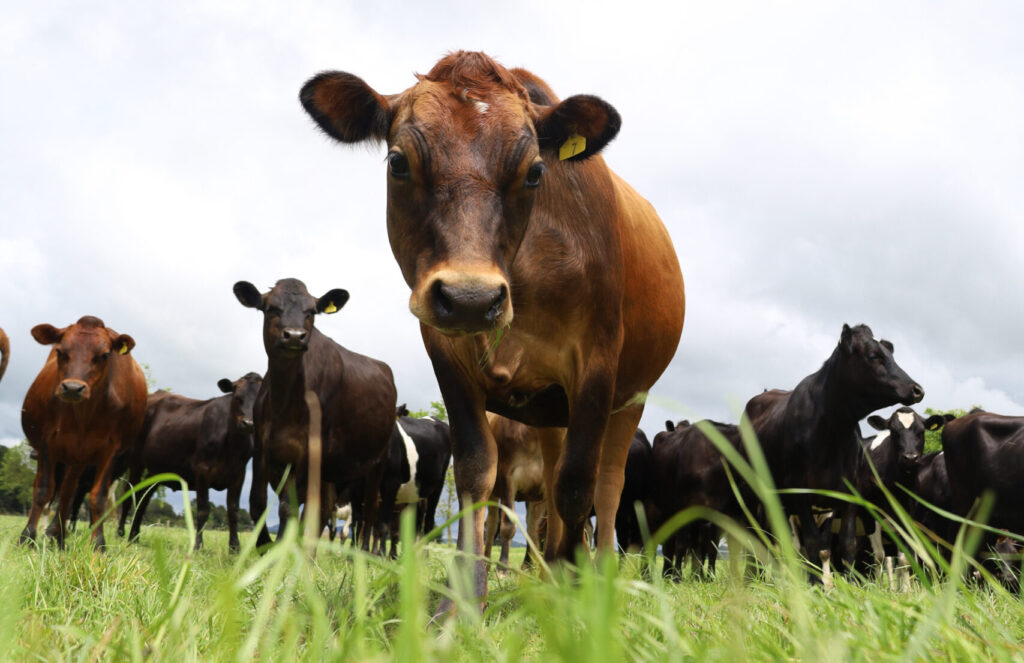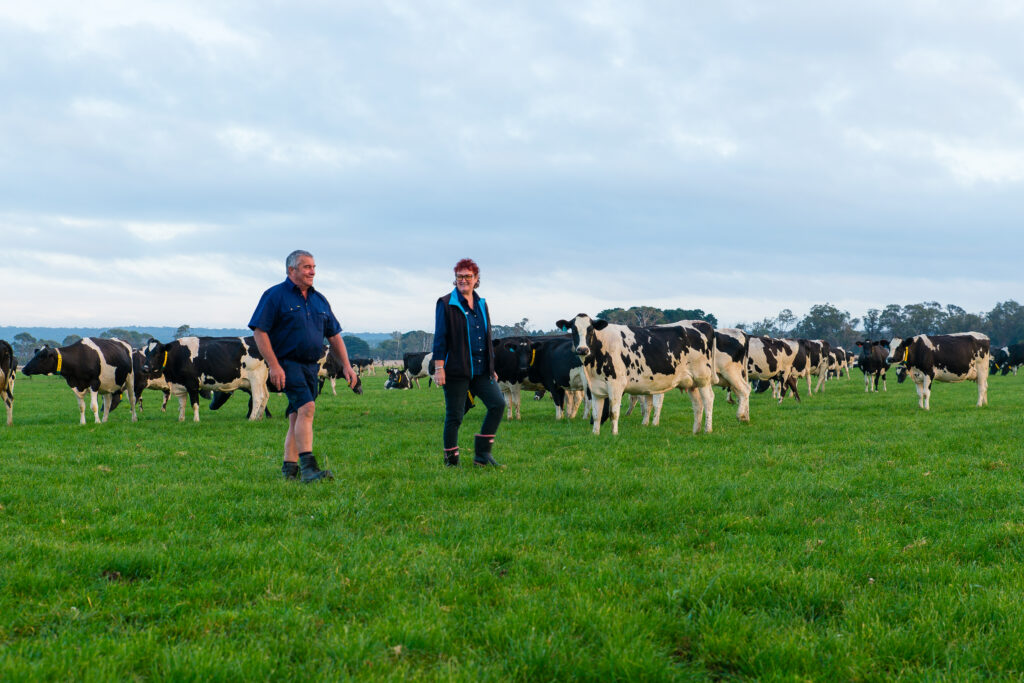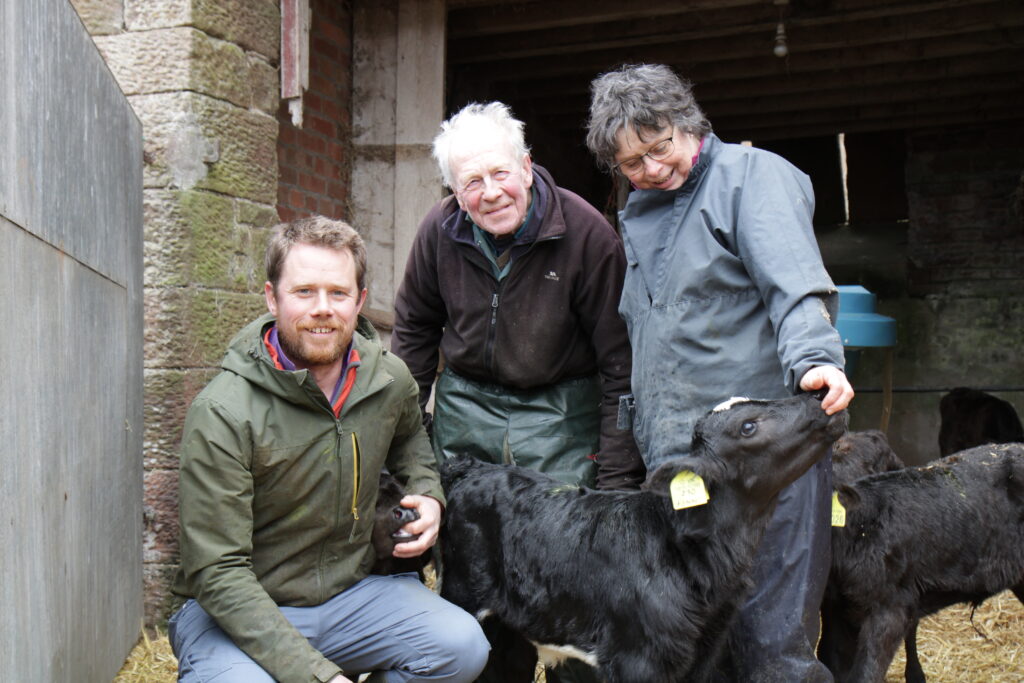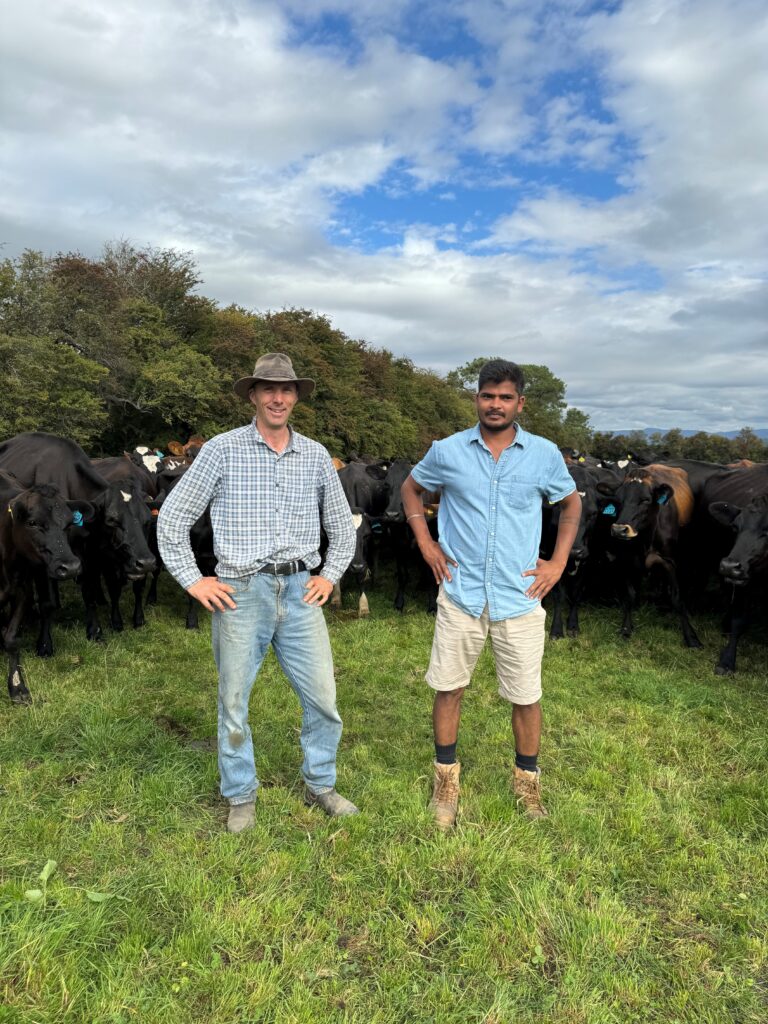By Rachel Wood, LIC Herd Improvement Technical Manager, & Jack Hooper, LIC Consultant Genetics Group
The primary goal of dairy cattle breeding is to increase the efficiency of milk solids production. In New Zealand crossbreeding is considered an effective way to achieve this goal. The numbers of crossbred cows are rapidly increasing in the national herd and have quickly earned the reputation as ‘easier care cows’.
Both farmer experiences and study results have shown that crossbreeding under New Zealand conditions delivers improvements in:
- Milk production traits
- Reproduction
- Health (e.g. somatic cells)
- Survival in the herd.
These improvements are the result of a phenomenon called heterosis, also called hybrid vigour.
Hybrid vigour explained
When animals of different breeds are crossed, the performance of the offspring tends to be greater than either of their parents. This superior performance is a result of hybrid vigour.
Crossing purebred animals of different breeds always results in 100% hybrid vigour, although the profit advantage for different types of crossbreeds differs.
For example, because Holstein-Friesians and Ayrshires are more closely related to each other than to Jerseys, the hybrid vigour advantage of the offspring from a Holstein-Friesian Ayrshire cross would be less than that of a Holstein-Friesian Jersey cross or an Ayrshire Jersey cross.
Table 1: Improvement of first cross Holstein Friesian x Jersey cows in NZ caused by hybrid vigour
Trait | Impact of hybrid vigour |
|---|---|
Milk fat | +4.7% |
Protein | +4.6% |
Milk volume | +4.2% |
Liveweight | +2.1% |
Cow fertility* | +5.2% |
Somatic cell count | -4.1% (favourable) |
Days of herd life | +13.5% |
* Number of cows re-calving in first 42 days of calving
Source: Bill Montgomerie NZAEL, Crosses and Ticks publication (2005)
Effects of hybrid vigour on production worth
The effects of hybrid vigour on milkfat, protein, milk yield and liveweight are included in the production values and production worth estimates for every cow in the New Zealand Animal Evaluation (AE) system.
These effects remain as part of the lifetime performance of a cow, but are not passed onto offspring.
Table 2 measures the hybrid vigour effects for production and liveweight of the different breed crosses. The results show that the effects of hybrid vigour are greater when the differences between the parent’s breeds are largest. For example, Holstein-Friesian and Ayrshires are more closely related to each other than to Jerseys so the hybrid vigour value is smaller.
Table 2: Estimated values for hybrid vigour for three different first crosses
Trait | HF x Jer | HF x Ayr | Jer x Ayr |
|---|---|---|---|
Protein (kg) | 8.0 | 4.5 | 8.1 |
Fat (kg) | 11.3 | 6.2 | 11.8 |
Volume (litres) | 169 | 104 | 184 |
Liveweight (kg) | 10.7 | 6.6 | 10.3 |
Somatic cell count | -0.04 | -0.03 | -0.05 |
Production worth (NZ$) | $53.81 | $27.89 | $55.73 |
Source: LIC, February 2019
Multiply the effects of hybrid vigour by your herd size and you are into some quite large numbers
Functional traits
The production and liveweight traits that are included in production worth only tell part of the story. Hybrid vigour also significantly benefits functional traits like reproduction, health and survival.
The major advantage that hybrid vigour gives to these traits is longevity in the herd. First crosses live in the herd around 220 days longer compared to the average of the straight-bred parents.
These additional days potentially increase the profitability of crossbred herds in two main ways:
1. A longer herd life can substantially reduce the number of replacements required for a herd and therefore the associated costs of rearing and grazing replacements. More cows in mature age groups increases the total productivity of the herd.
2. Better health and fertility reduces intervention costs, decreases the incidence of involuntary culling and increases scope for voluntary culling and/or sale of surplus stock.
The improvements to herd life are consistent with environmental and sustainability objectives of many dairy farms.
Remember that hybrid vigour is a supplement to genetic gain not a replacement for it. Genetic gain is heritable so continues in the herd for future generations. Hybrid vigour is limited to the animal itself and does not pass on to its offspring.
Later crosses and hybrid vigour
Hybrid vigour is strongest in the first cross between pure breeds.
After this, the effects weaken yet remain important. Table 3 shows the hybrid vigour effects of mating different breeds or crossbreeds with each other. A first cross cow (F8J8) mated to a Holstein-Friesian bull (F16J0) will retain 50% of the hybrid vigour benefits.
Table 3: Hybrid vigour effects of mating different breeds and crossbreeds with each other
Dam (breed 16ths) |
|---|
Sire (breed 16ths) | F16J0 | F12J4 | F8J8 | F4J12 | F0J16 |
F0J16 | 100 | 75 | 50 | 25 | 0 |
F4J12 | 75 | 63 | 50 | 38 | 25 |
F8J8 | 50 | 50 | 50 | 50 | 50 |
F12J4 | 25 | 38 | 50 | 63 | 75 |
F16J0 | 0 | 25 | 50 | 75 | 100 |
Effects on physical appearance
First cross animals from purebred parents are usually very similar in physical appearance. A Holstein-Friesian Jersey cow first cross almost always has a solid black coat.
However when two first cross animals are mated, the genes adapt more which results in a greater range of coat colours, size and milk production, e.g. smaller black and white animals or larger Jersey coloured animals.
Mating a first cross animal back to a purebred sire, e.g. a Holstein-Friesian, gives the same amount of hybrid vigour as mating two first cross animals, with a reduction in variation
The national dairy herd
The rise in cross breeding in New Zealand has been extremely rapid and is now the preferred cow for many farmers.
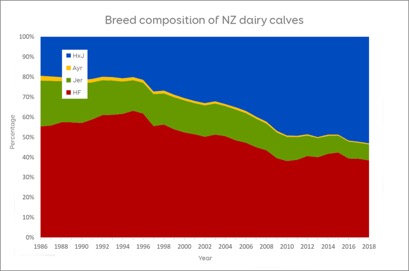
Source: LIC, January 2019
Around half of the crossbred dairy cows in the New Zealand herd are sired by crossbred bulls. The remaining half are sired by purebred bulls (mainly Holstein-Friesian and Jersey) to produce the preferred type of crossbred cow for each farm.
The financial benefits of hybrid vigour through crossbreeding have been well discovered in the New Zealand national herd.
